
As fall approaches, we want to remind everyone that leaf litter is critical for many pollinators and other beneficial insects. This post about fall clean-up is worth revisiting…
As we learn more about the critical relationships between plants, insects, and birds, the best advice we are getting about fall leaf clean-up is … don’t!
In the old days, suburbanites taking care of their lawns raked (yes, raked!) fall leaves into giant piles to be burned. The familiar scent of burning leaves was everywhere – and we released tons of carbon sequestered in those leaves into the atmosphere.
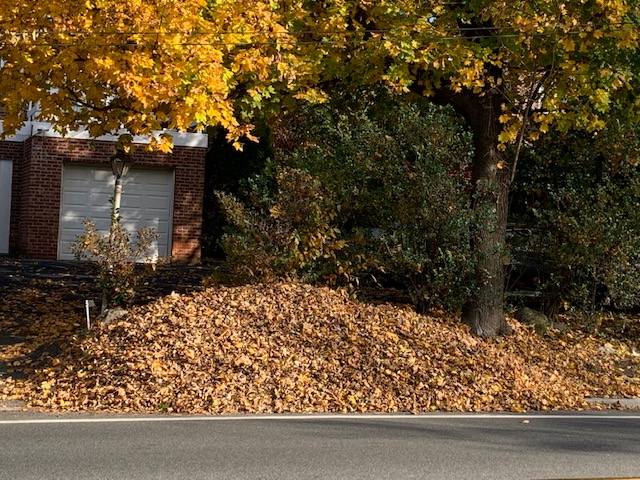
So anti-burning ordinances were passed, and we started using gas leaf blowers to form the leaf piles, or bagging leaves for municipal workers to collect – all at taxpayer expense. Municipalities started spending millions to ship leaves out of the county. Enterprising souls then turned our leaves into compost to sell back to us. Not a good deal for us.
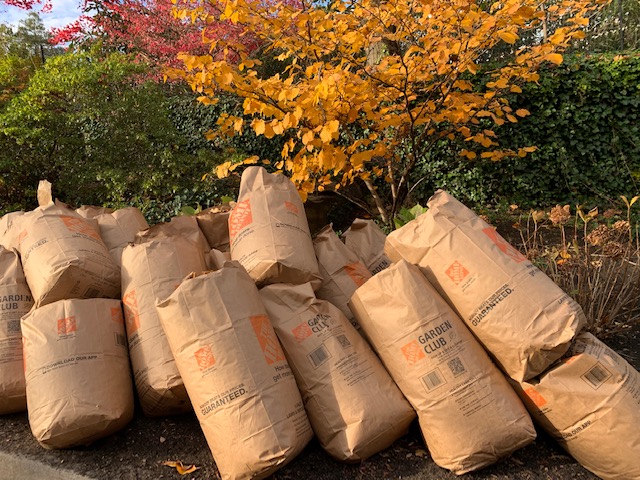
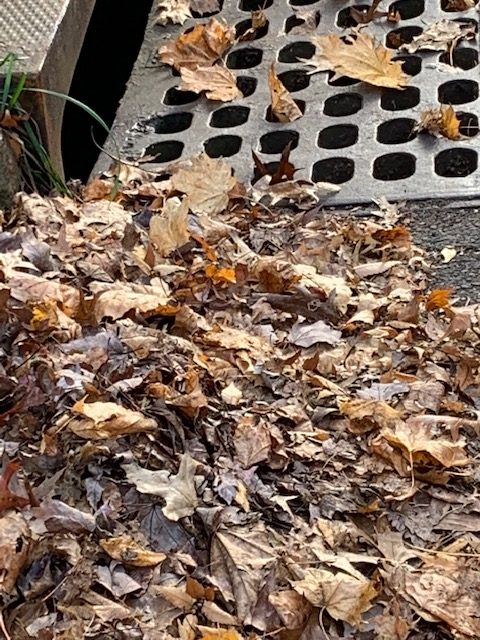
Since that routine makes neither economic nor ecological sense, we started hearing campaigns urging us to use mulching mowers. The idea was to chop leaves into tiny pieces and leave them on the lawn to enrich the soil. That method is a big improvement, and it definitely works — it’s great for lawn health and municipal budgets.
But we have learned that chopping up leaves has an unanticipated cost. Native bees burrow into the ground under leaf litter to survive the winter. Eggs and larvae of butterflies, moths, fireflies, and many other insects hang on to leaves, or hide under them, until warm weather returns. If we chop up or remove leaves to clear the ground in our yards, we are unintentionally destroying insects that baby birds need for food in the spring, as well as insects we need and enjoy.
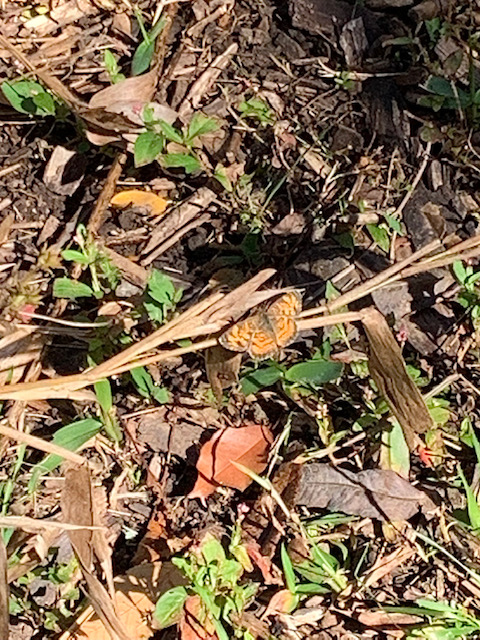
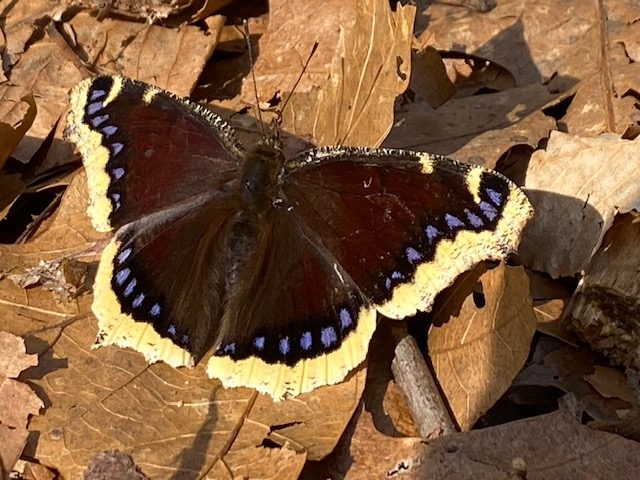
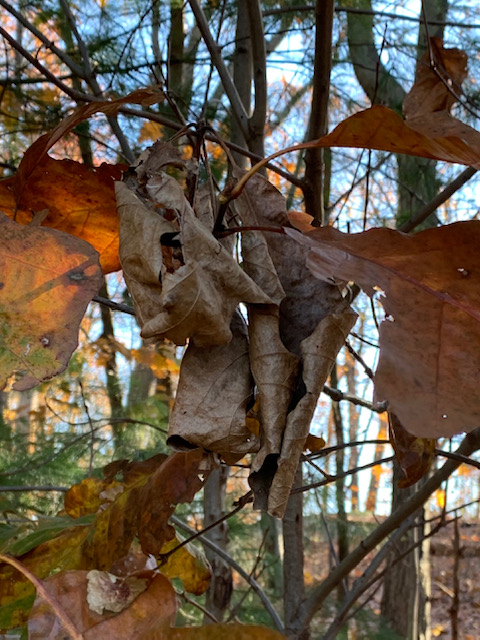
The best use of fall leaves – and the best place for them – is under the trees that dropped them. Trees and all other forest plants evolved growing with a thick layer of leaves in the winter. Dead leaves nourish the soil and everything that lives in it. Leaf litter on your shrub and flower beds protects the roots of your plants and protects early buds from freezing and loss of moisture.
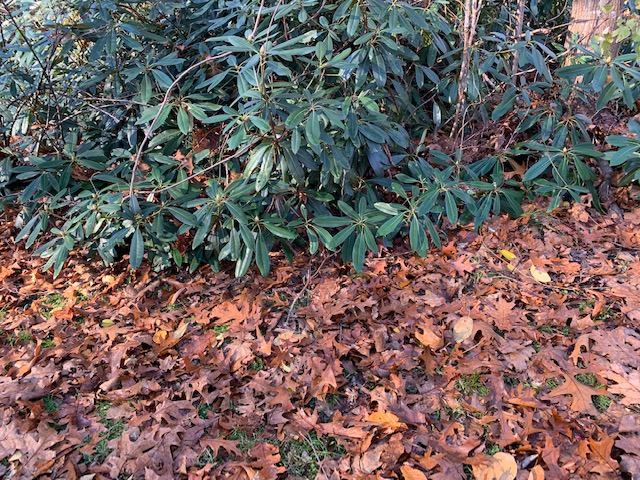
Of course, you’ll want to blow (or better, rake!) leaves off of driveways and paths, and either mulch or clear leaves that fall on lawn. But the best place to put them is in your shrub and flower beds and under your trees. A loose, 6-inch deep layer of leaves will not hurt your shrubs and perennials – quite the opposite. If there are still too many leaves, create a leaf pile in an out-of-the-way area, or add leaves to a compost bin. In spring, once the weather is warm and insects have had a chance to emerge, you can mulch the remaining leaves and return them to the lawn or flower beds, or even put them out for removal with spring clean-up.

Pro tip: Less lawn and more garden makes leaf clean-up a cinch! If your trees are surrounded by garden beds rather than lawn, nature does the work for you!
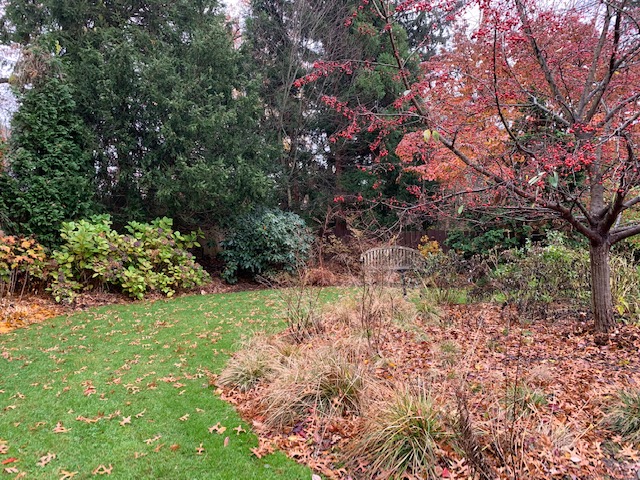

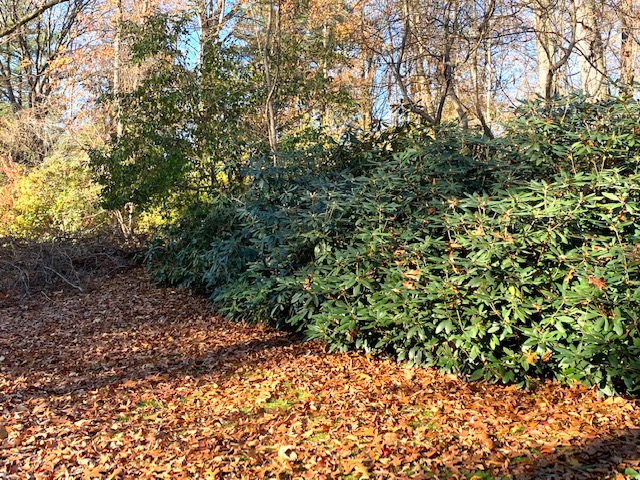

We’ll worth a reminder for this fall!
We’ll worth the reminder!